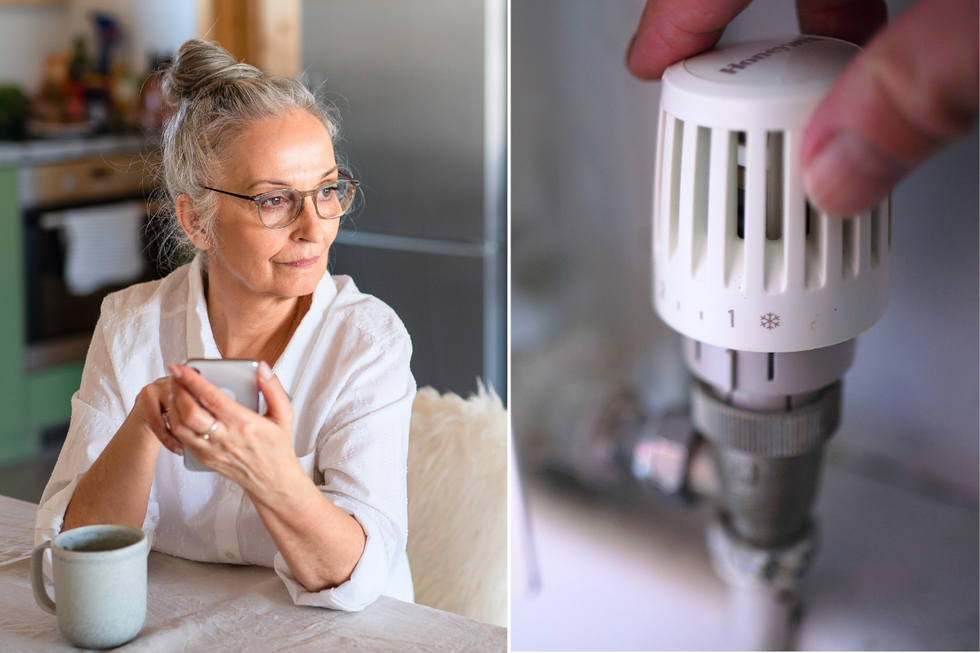‘Heat the human, not the home!’ Britons turn to clever hacks to cut rising winter bills

Households look for affordable ways to stay warm after Ofgem’s latest price rise amid warnings over insurance pitfalls
Don't Miss
Most Read
Latest
With energy bills climbing yet again following Ofgem’s two per cent price increase in October, millions of UK households are searching for ways to stay warm without breaking the bank this winter.
The annual struggle with heating costs has become even more pressing as temperatures drop across Britain.
Many families are looking for both immediate fixes and long-term strategies to reduce their energy spending.
From simple household items that can boost insulation to modern technology that cuts consumption, there are numerous approaches available.
TRENDING
Stories
Videos
Your Say
But while trying to save money, it is crucial to avoid common mistakes that could end up costing far more in the long run.
Whether you are after quick wins or planning bigger changes, there are practical steps that can make a real difference to your bills this winter.
One surprisingly effective trick involves using bubble wrap on your windows to boost insulation.
Mark McShane from Boiler Cover UK recommends this simple method, explaining that the air pockets in bubble wrap create an extra barrier against heat loss.
Ms McShane said it is particularly popular for greenhouse windows but works just as well in homes.

Households look for affordable ways to stay warm
| GETTYTo apply it, simply cut the wrap to fit your window, spray water onto the glass, then press the bubble wrap against the wet surface with the bubbles facing the window.
While it does make the view fuzzy, plenty of light still gets through.
The material will not damage your windows or leave marks when you remove it after winter.
It is a technique that costs just a few pounds but can noticeably reduce heat escaping through single-glazed windows.
Another money-saving approach is to focus on warming yourself rather than heating entire rooms.
Electric blankets have become increasingly popular as they cost just pennies per hour to run.
LATEST DEVELOPMENTS

Energy experts say electric blankets cost significantly less to run than whole-house central heating
| GETTYEnergy experts point out that using an electric blanket is far cheaper than firing up the central heating for the whole house.
This follows the principle of "heat the human, not the home" – a strategy often promoted by consumer champion Martin Lewis.
With energy costs rising, many households are discovering that staying cosy under an electric blanket while watching TV or working from home can slash their bills.
It is one of the simplest ways to stay comfortable during cold evenings without touching the thermostat.
However, attempts to cut heating costs can backfire if you are not careful with your home insurance.
Angela Pilley from Defaqto warns that switching off heating completely or letting temperatures drop too low could invalidate your cover.
Ms Pilley said many insurers now require homeowners to maintain minimum heating levels, especially when away from home.
If pipes freeze and burst because temperatures were not maintained, you might find yourself facing hefty repair bills with no insurance payout.
Additionally, 82 per cent of boiler insurance policies require proof of recent servicing, typically within 12 to 36 months.
Over a third will not cover boilers beyond a certain age, often 10 or 15 years old.
Louise Clark from the Association of British Insurers advises checking your policy terms carefully and using anti-frost settings on smart thermostats to prevent costly damage.
Ms Clark said that a few simple precautions can prevent frozen pipes and save homeowners significant repair costs.

Heat pumps offer another route, working like reverse fridges to extract warmth from air or ground
| PA/GETTYFor those planning ahead, more substantial home improvements can deliver lasting savings.
Simon Bones from Genous suggests starting with basic insulation upgrades.
He said that topping up loft insulation typically costs £1,500 to £2,000 and can be completed in a day, with boarding added so the space remains usable for storage.
Cavity wall insulation involves drilling small holes and filling gaps with beads, costing around the same but with Government subsidies available for qualifying properties.
Heat pumps offer another route, working like reverse fridges to extract warmth from air or ground.
While more expensive upfront than boilers, they can reduce energy use to a quarter of previous levels.
The Government’s Boiler Upgrade Scheme provides £7,500 towards air source heat pumps, making them more affordable for most homes.
More From GB News











